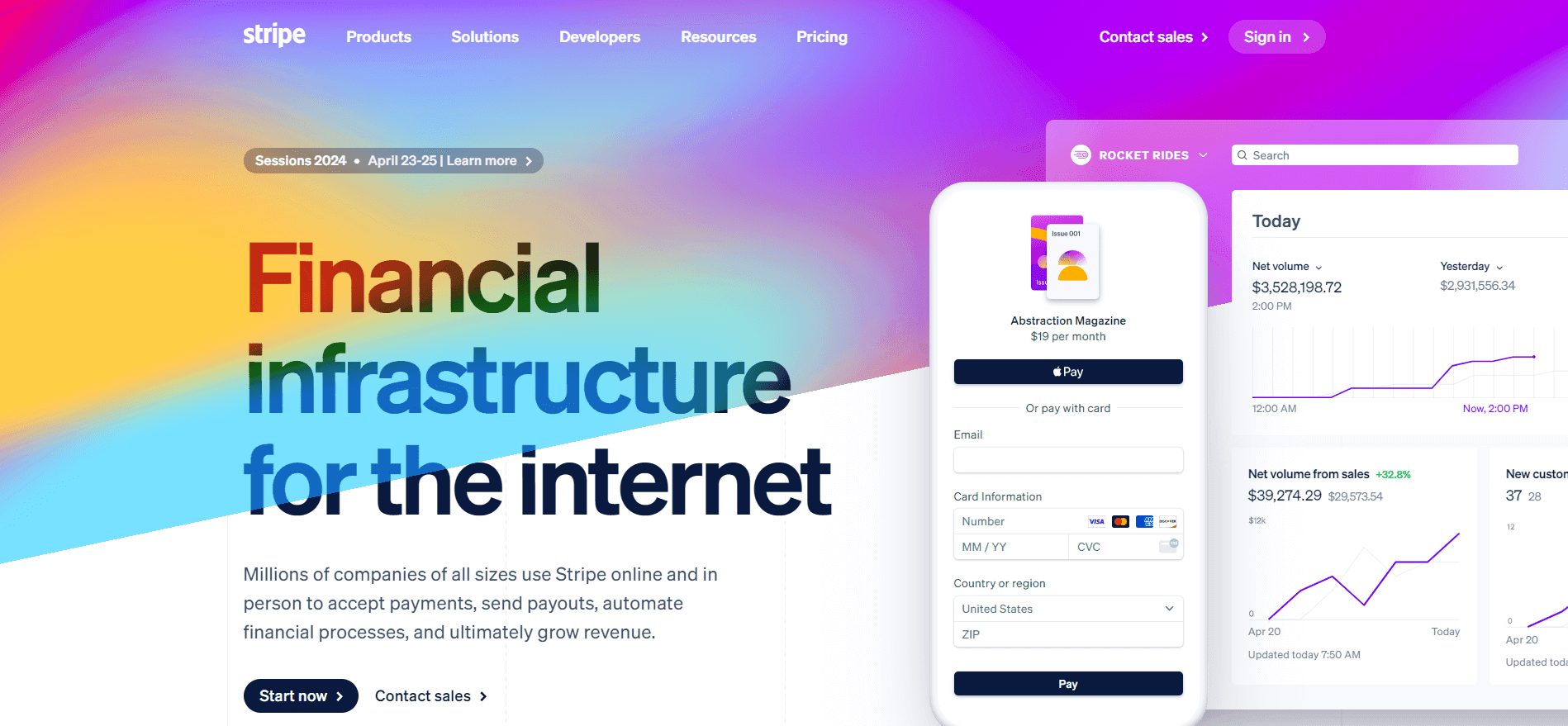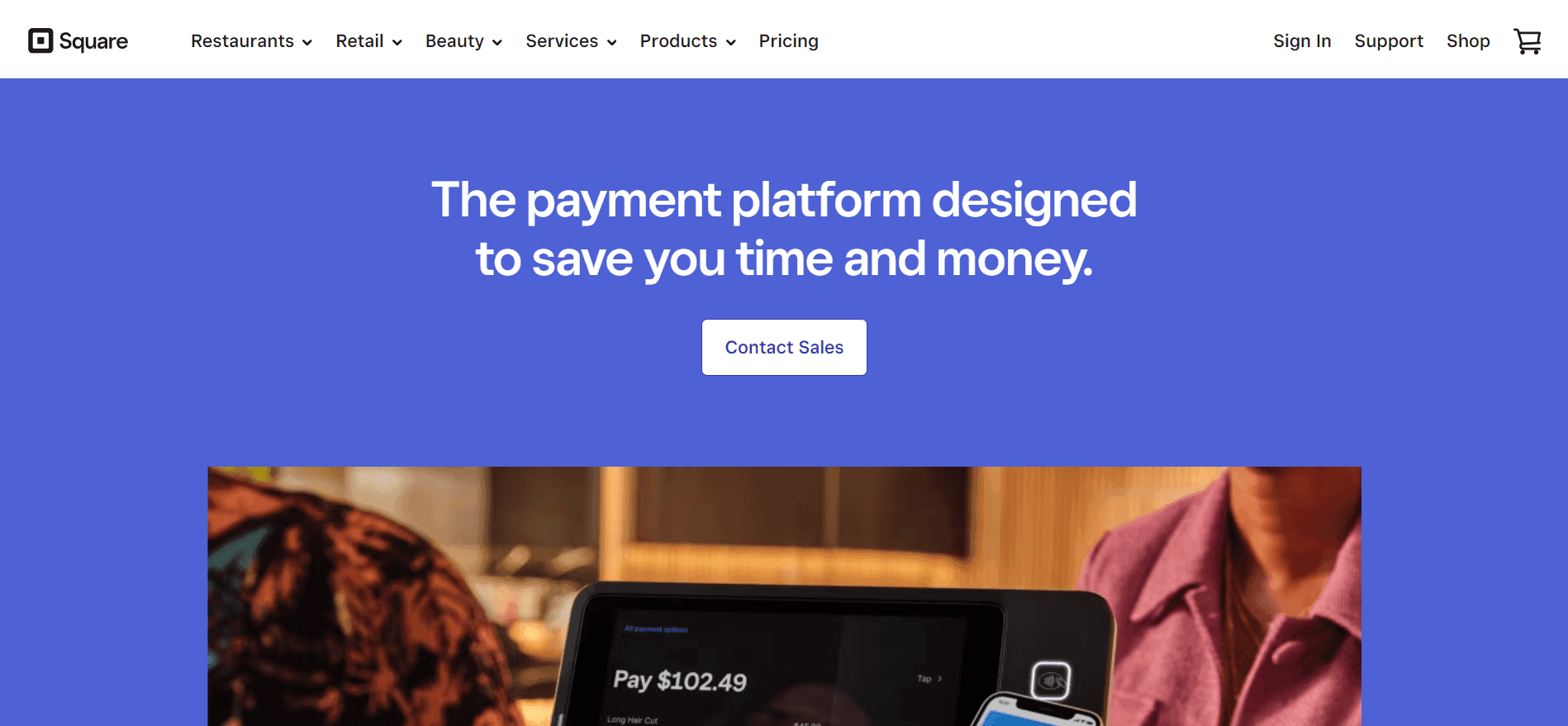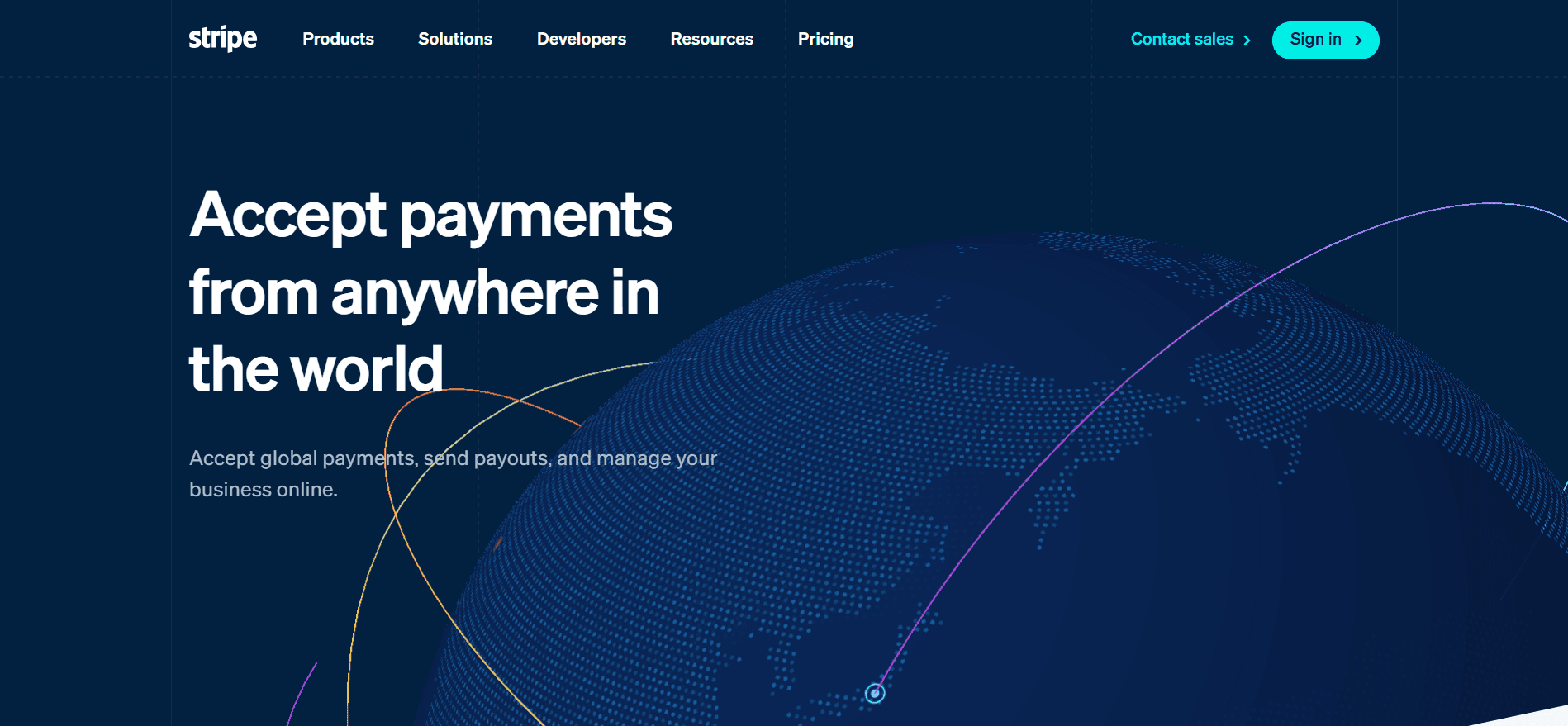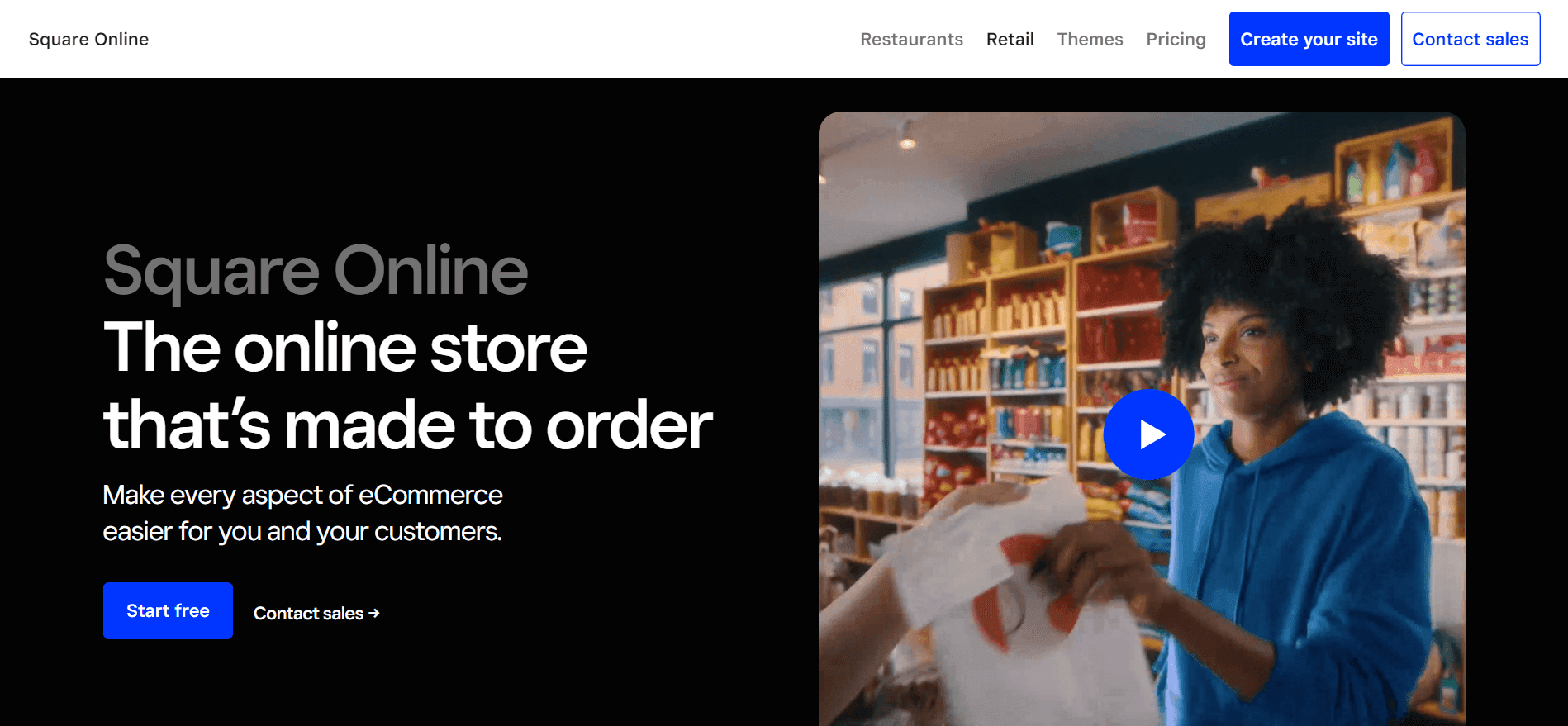Mar 13, 2024 | 9 minutes
International payment gateways: Stripe vs Square
Let’s explore what international payment gateways are and some issues to consider when investing in one for your store.

If you’re looking to sell to customers abroad, you’ll almost certainly need an international payment gateway. This software facilitates online payments from anyone in the world - an especially vital feature since overseas customers can’t hand you cash in person!
Let’s explore what international payment gateways are and some issues to consider when investing in one for your store. We’ll also compare two leading international payment gateway solutions for the United States market - Stripe and Square- to see which option may be for you.
What is an international payment gateway?
An international payment gateway is software that helps merchants collect a customer’s international credit or debit card information during the payment process.
After collecting this data, the international payment gateway transmits it to a payment processor. The payment processor then uses the data to have the customer’s bank release funds to the merchant.
What do international payment gateways do for businesses?
International payment gateways help businesses:
Receive payment from international customers: Domestic payment gateways may not be able to read internationally-issued credit and debit cards. International payment gateways will have no such issues.
Simplify international transactions: While businesses can also take payments from international customers in other ways like international bank transfers, these options may be more troublesome and expensive for customers to execute. Using an international payment gateway simplifies the payment process for customers - they just need to enter their card details.
Extend their reach globally: By having the necessary payment infrastructure for getting paid by international customers in place, businesses can market to overseas audiences to grow their customer base.
Five considerations when choosing a payment gateway for international transactions
Accepting international payments can be more challenging than accepting domestic ones. Keep these five issues in mind as we explore Stripe and Square below:
Country availability: If the payment gateway isn’t available in your country, you may not be able to sign up for it in the first place. Apart from that, an international payment gateway that’s available in your country will be able to handle payments in your domestic currency. It will have also taken steps to comply with your country’s legal regulations.
Fees and currency conversion: What are the payment gateway’s fees for facilitating international payments? Can it convert currencies and if so, are there extra fees for that?
Supported languages: Confirm if the payment gateway is available in your preferred language.
Legal compliance: The payment gateway should have implemented processes and infrastructure to comply with your country’s payment laws. This way, your business will also comply with regulations when you use the payment gateway’s services.
Availability of integrations: Check out the payment gateway’s integrations to see if it will fit well with your workflow and internal processes. Make can also help integrate your payment gateway with other apps if it doesn’t offer a native integration.
What are the differences between Stripe and Square?
Stripe and Square are two of the most popular payment gateways in the United States. Let’s see how their international payment gateway features compare:
Stripe
Pricing
Pay-as-you-go model - no monthly fee (see full pricing here).
4.4% + $0.30 per successful international card charge. An additional 1% fee applies for currency conversion.
Integrations
Stripe has partnered with a wide variety of apps, including:
Marketing and sales platforms like Mailchimp, Constant Contact, and HubSpot.
Invoicing and subscriptions software like Chargebee, InvoiceNinja, and Quaderno.
Ecommerce tools like Easy Digital Downloads, Gravity Forms, and Shopify.
Strongest features
Supports more than 135 currencies.
Available in more than 30 languages.
Advanced integrations and features for tech-savvy teams.
Does Stripe accept international payments?
Yes, in over 135 currencies and 45 countries.
Square
Pricing
Free plan: Pay-as-you-go-model of 2.9% + $0.30 per transaction. No monthly fees or currency conversion fees for merchants.
Plus plan: $29/month and 2.9% + $0.30 per transaction.
Premium plan: $79/month and 2.6% + $0.30 per transaction.
Integrations
Square integrations are available on the platform’s app marketplace. Notable apps it integrates with include:
Ecommerce tools like WooCommerce, BigCommerce, and Magento.
Marketing and analytics tools like ActiveCampaign, Klaviyo, and Goodreviews.
Accounting and tax tools like QuickBooks Online, Xero, and FreshBooks.
Strongest features
You can use Square to build an online store if you don’t have one.
Receive your payments within one to two business days (or sooner for a fee).
No currency conversion fees for merchants.
Does Square accept international payments?
Yes, but the platform is available to only users in certain countries. These countries include the United States, Canada, the United Kingdom, Australia, and Japan.
The differences between Stripe and Square
Stripe was specifically designed to take online payments, while Square was initially built to take in-person payments using its point-of-sale hardware.
This may explain why Stripe provides more advanced payment features for online businesses, including:
Customizable checkout interfaces.
Extensive integrations.
Alternative currency payouts.
In contrast, Square primarily serves businesses that sell both online and offline.
Apart from its online payment gateway and processing features, the platform offers an impressive selection of payment processing hardware - like registers, terminals, and stands - for taking in-person payments.
Using Stripe as an international payment gateway
Stripe’s international availability
Available to businesses in 45 countries.
Can accept payments in 135 currencies from anywhere in the world.
Stripe’s international fees
4.4% + $0.30 per successful international card charge. An additional 1% fee applies for currency conversion.
4.2% + $0.05 per successful international card charge for in-person payments.
Advantages of using Stripe for international payments
Stripe is available in many countries.
Merchants can receive payouts in more than 15 currencies.
Merchants can take advantage of local payment platforms (like Alipay and WeChat Pay).
Using Square as an international payment gateway
Square’s international availability
Users in Australia, Canada, France, Japan, the Republic of Ireland, Spain, the United States and the United Kingdom can sign up for a Square account.
The platform accepts most internationally-issued cards.
Square’s international fees
Free plan: Pay-as-you-go-model of 2.9% + $0.30 per transaction. No monthly fees or currency conversion fees for merchants.
Plus plan: $29/month and 2.9% + $0.30 per transaction.
Premium plan: $79/month and 2.6% + $0.30 per transaction.
The currency you can charge in depends on the country in which you signed up for Square. For example, if you have a United States-based Square account, you can charge only United States dollar currency prices.
If a customer’s domestic currency is different from the currency you’re charging in, they will have to pay currency conversion fees to their bank when making payment.
Advantages of using Square for international payments
Square is compatible with most internationally-issued cards.
Merchants don’t have to pay currency conversion fees for international payments.
As a whole, Stripe’s wider international availability may make it the more suitable option for merchants with customer bases in many countries.
Meanwhile, new merchants who don’t have an online store yet may prefer using Square to build their store - and manage their payments - in one place.
What’s the best international payment gateway for my business?
The best international payment gateway for your business is the one that:
Has reasonable fees: Stripe and Square both offer competitive pay-as-you-go pricing. Square also has paid monthly plans for running an online store from its platform, which you may find attractive if you don’t already have one. Run the numbers to find out which platform makes the most financial sense for your business.
Is available in your country: Check if the platform is available in your country before signing up. At this time, Stripe is available in more countries than Square.
Supports your currency: This helps you get paid in your currency even if your customers use a different currency. Stripe supports more than 135 currencies, while Square supports eight.
Allows prompt earnings withdrawals: You shouldn’t have to wait too long to withdraw your hard-earned revenue - otherwise, you may run into cash flow issues. Stripe payouts are generally available for withdrawal within seven days and Square generally issues payouts after one to two business days.
Alternatives to Stripe and Square around the world
If Stripe and Square aren’t the most suitable for your business, try these alternative international payment gateway options:
PayPal
PayPal is a household name that doesn’t really need an introduction. Available in over 200 countries and supporting 25 currencies, PayPal is one of the preferred payment methods around the world.
PayMongo
PayMongo is an international payment gateway that allows businesses in the Philippines to take Visa and Mastercard payments.
Businesses can use PayMongo to receive international payments as long as these are in the Philippine peso currency. If an international customer makes payment in a different currency, their bank may charge them a conversion fee to convert the payment to the Philippine peso currency.
Razorpay
Razorpay helps India-based businesses take payments from both domestic and international credit and debit cards, among other options. The platform supports more than 100 currencies, with international payments being automatically converted to Indian rupees.
EBANX
Popular Latin American payment gateway EBANX facilitates credit card and debit payments throughout close to 30 countries.
Its payment processing fee may differ from country to country. For example, EBANX charges a 4.90% fee for credit card payments made to Brazilian-based businesses, and a 7.90% fee (with a minimum fee of $0.40) for the same for businesses based in Argentina.
Alipay
Alipay is a popular Chinese online payment platform that accepts both domestic and international card payments.
A merchant transaction fee of 0.55% applies to each transaction, plus another 3% if the customer has paid using an international credit card. The international card fee is waived for transactions below 200 renminbi.
YooKassa
YooKassa, also known as YooMoney, is a Russian electronic payment service. It supports both Russian and foreign-issued bank cards, but with a payment cap of 700,000 rubles per month (and 350,000 rubles per transaction).
The platform currently supports 10 foreign currencies.
Mercado Pago
Online payment solution Mercado Pago provides an option for Latin American businesses that want to take local and international payments.
The merchant has to list prices in its domestic currency, but customers can pay with their international credit or debit card. The customer’s bank will then convert the payment to the merchant’s domestic currency.
Uniquely, the platform charges different fees for successful transactions depending on how soon the merchant wants to withdraw the payment. For example, there is a 1.49% fee + Value-Added Tax (VAT) for withdrawing payments 35 days after receipt, and a 6.99% fee + VAT for instant withdrawal.
Get the most out of your Stripe or Square international payment gateway
Once you’ve decided on your international payment gateway - be it Stripe, Square, or something else - check if you can integrate it with your apps.
This lets your international payment gateway automatically send sales data to these apps (and vice versa) whenever you receive new orders. You can then further process the data as you see fit.
Tapping into a native integration is the most straightforward method of integrating your international payment gateway with another app. But if one isn’t available, you may still be able to connect the two using Make. It works as a “middle-man” platform for integrating apps - more than 1,600 of them, to be exact - and automating your tasks.
Here are some payment-related workflows you can automate using Make:
You’ll just need a Make account to start integrating your international payment gateway. If you don’t have one, get a free Make account here.





